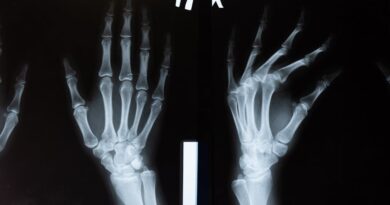The Importance of Fiber for Managing Pain
Pain is a universal human experience that can range from mild discomfort to debilitating agony. Whether it’s chronic pain from conditions like arthritis or acute pain from an injury, finding effective ways to manage and alleviate pain is a priority for many individuals. While there are various treatment options available, one often overlooked but crucial aspect of pain management is the role of fiber in our diet. In this comprehensive guide, we will explore the importance of fiber for managing pain, highlighting its benefits, mechanisms of action, and practical implications.
The Role of Fiber in Pain Management

Fiber is a type of carbohydrate found in plant-based foods that the body cannot digest. Instead, it passes through the digestive system relatively intact, providing a host of health benefits along the way. When it comes to pain management, fiber plays a significant role in reducing inflammation, promoting gut health, and regulating blood sugar levels, all of which can contribute to alleviating pain.
One of the key ways in which fiber helps manage pain is by reducing inflammation in the body. Chronic inflammation is a common underlying factor in many pain conditions, such as arthritis, fibromyalgia, and migraines. Fiber-rich foods, such as fruits, vegetables, whole grains, and legumes, contain antioxidants and phytonutrients that have anti-inflammatory properties. By consuming a diet high in fiber, individuals can help decrease inflammation levels, potentially leading to a reduction in pain.
The Gut-Brain Connection

Another important aspect of fiber’s role in pain management is its impact on gut health. The gut is often referred to as the “second brain” due to the complex network of neurons and neurotransmitters it contains. Research has shown that the gut microbiota, comprised of trillions of bacteria living in the digestive tract, plays a crucial role in regulating pain perception and mood.
Fiber acts as a prebiotic, feeding the beneficial bacteria in the gut and promoting a healthy microbiome. A diverse and balanced microbiome is essential for proper immune function, digestion, and the production of neurotransmitters like serotonin, which is often referred to as the “happy hormone.” By supporting gut health through fiber consumption, individuals can potentially improve their pain tolerance and overall well-being.
Fiber and Blood Sugar Regulation

Unstable blood sugar levels can exacerbate pain conditions and contribute to inflammation in the body. Fiber-rich foods help regulate blood sugar by slowing down the absorption of sugar into the bloodstream. This helps prevent spikes and crashes in blood sugar levels, which can lead to mood swings, fatigue, and increased pain sensitivity.
Incorporating fiber into meals can help individuals maintain stable blood sugar levels throughout the day, providing sustained energy and reducing the risk of experiencing pain flares. By focusing on whole, unprocessed foods high in fiber, individuals can better manage their pain symptoms and improve their overall quality of life.
Fiber-Rich Foods for Pain Management

Now that we understand the importance of fiber for managing pain, let’s explore some of the best sources of fiber to incorporate into our diet:
1. Fruits and Vegetables
Fruits and vegetables are some of the richest sources of fiber and essential nutrients. Berries, apples, pears, broccoli, spinach, and kale are excellent choices for increasing fiber intake and reducing inflammation in the body.
2. Whole Grains
Whole grains like quinoa, brown rice, oats, and barley are high in fiber and can help regulate blood sugar levels. They also provide a steady source of energy and support overall gut health.
3. Legumes
Beans, lentils, and chickpeas are powerhouse sources of fiber, protein, and antioxidants. Including legumes in meals can help balance blood sugar, improve digestive health, and reduce inflammation.
Common Misconceptions About Fiber and Pain
Despite the numerous benefits of fiber for managing pain, there are some common misconceptions that may prevent individuals from incorporating enough fiber into their diet:
1. Fiber Causes Digestive Issues
While it’s true that sudden increases in fiber intake can cause temporary digestive discomfort like bloating or gas, gradually increasing fiber consumption and staying well-hydrated can help prevent these issues. Fiber is essential for maintaining healthy digestion and should be included as part of a balanced diet.
2. All Fiber Is Created Equal
Not all fiber is the same, and different types of fiber have varying effects on the body. Soluble fiber, found in oats, beans, and citrus fruits, can help lower cholesterol and regulate blood sugar, while insoluble fiber, found in whole grains and vegetables, adds bulk to the stool and supports digestive health. A combination of both soluble and insoluble fiber is essential for overall well-being.
Conclusion
In conclusion, the importance of fiber for managing pain cannot be overstated. From reducing inflammation and promoting gut health to regulating blood sugar levels, fiber plays a crucial role in alleviating pain and improving overall quality of life. By incorporating fiber-rich foods into our diet and prioritizing gut health, individuals can take proactive steps towards managing their pain more effectively. Make small changes today to reap the long-term benefits of fiber for a healthier, pain-free tomorrow.
To wrap things up, remember that a diet rich in fiber is not only good for your physical health but also for your mental well-being. Take care of your body from the inside out by fueling it with fiber-rich foods that support your overall health and help you live a more vibrant, pain-free life.




